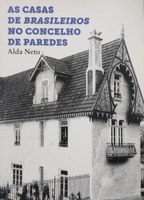Presentation of the book ‘The Houses of Brazilians in the Municipality of Paredes’
Supported by Paredes Municipal Council, the Misericórdia of Paredes and CEPESE, this publication was launched on 19 June at Palacete da Granja, the current House of Culture of Paredes and itself a "Brazilian" house. The event was moderated by the Councillor for Culture of Paredes, Beatriz Meireles, and Professor Fernando de Sousa presented the book, emphasising the importance of works like this for the study of Portuguese emigration to Brazil and the relations established between Portugal and Brazil. For his part, the head of the Santa Casa da Misericórdia, Ilídio Meireles, highlighted the importance of these local studies for learning about the municipalities and their history, since these Brazilians were fundamental to the economic, social and cultural development of their lands of origin.
The author of this study, Alda Neto, believes that in a time when the subject of migration is constantly being addressed by historiography, it is extremely important and pertinent to analyse the successful cases of the men and women who once left a densely populated and economically poor country and returned wealthy. These emigrants, known as ‘torna-viagem Brazilians", left at a very young age, as children, for a country where the only thing they knew was the language and one or two relatives or friends, and returned as adults to a country that remained agricultural and little industrialised. This success was materialised in the affirmation of a personal and material identity in their places of origin, which was reflected in the heritage they built, restored or conserved: houses, churches, schools, roads, gardens and bandstands.

